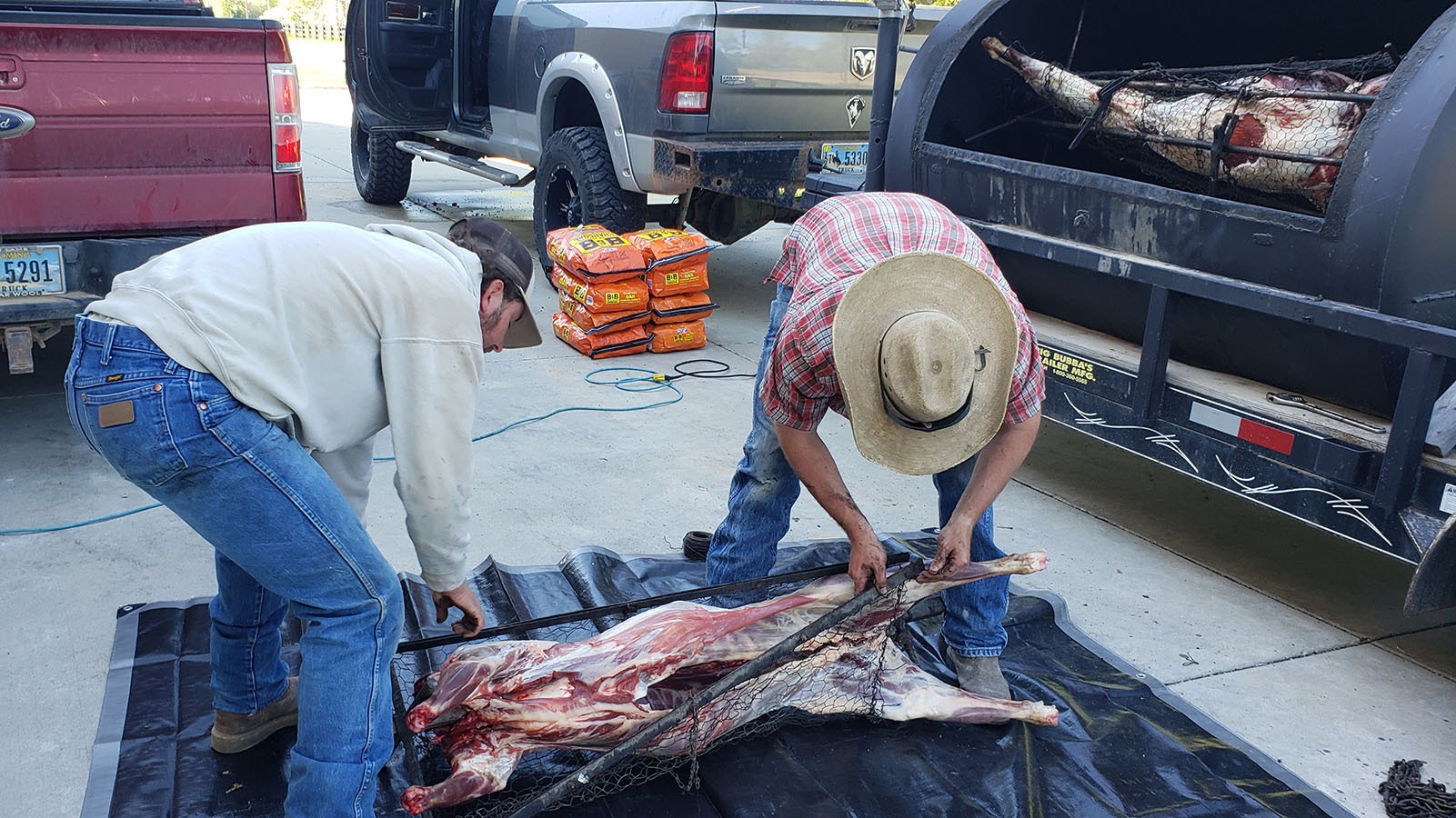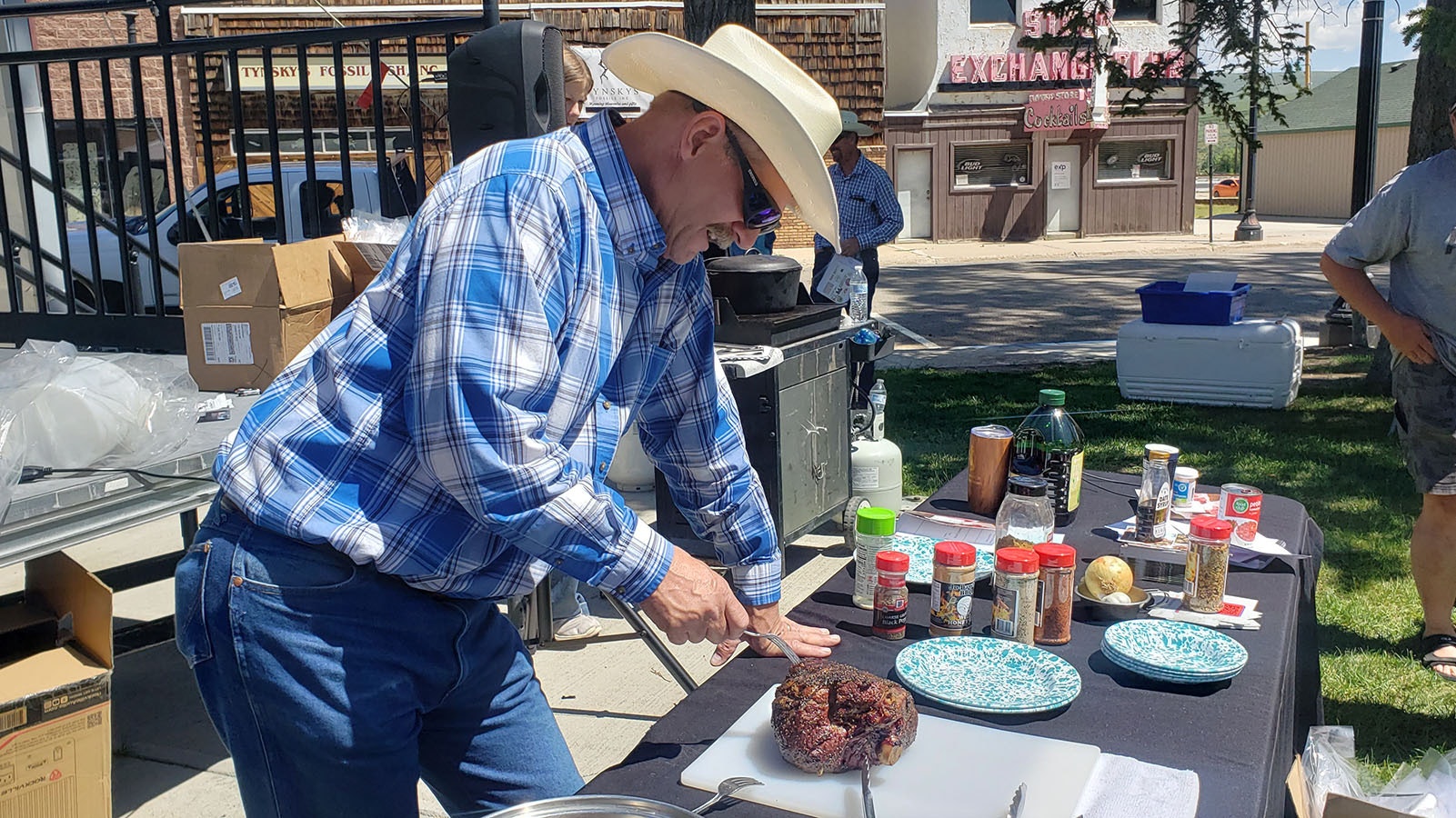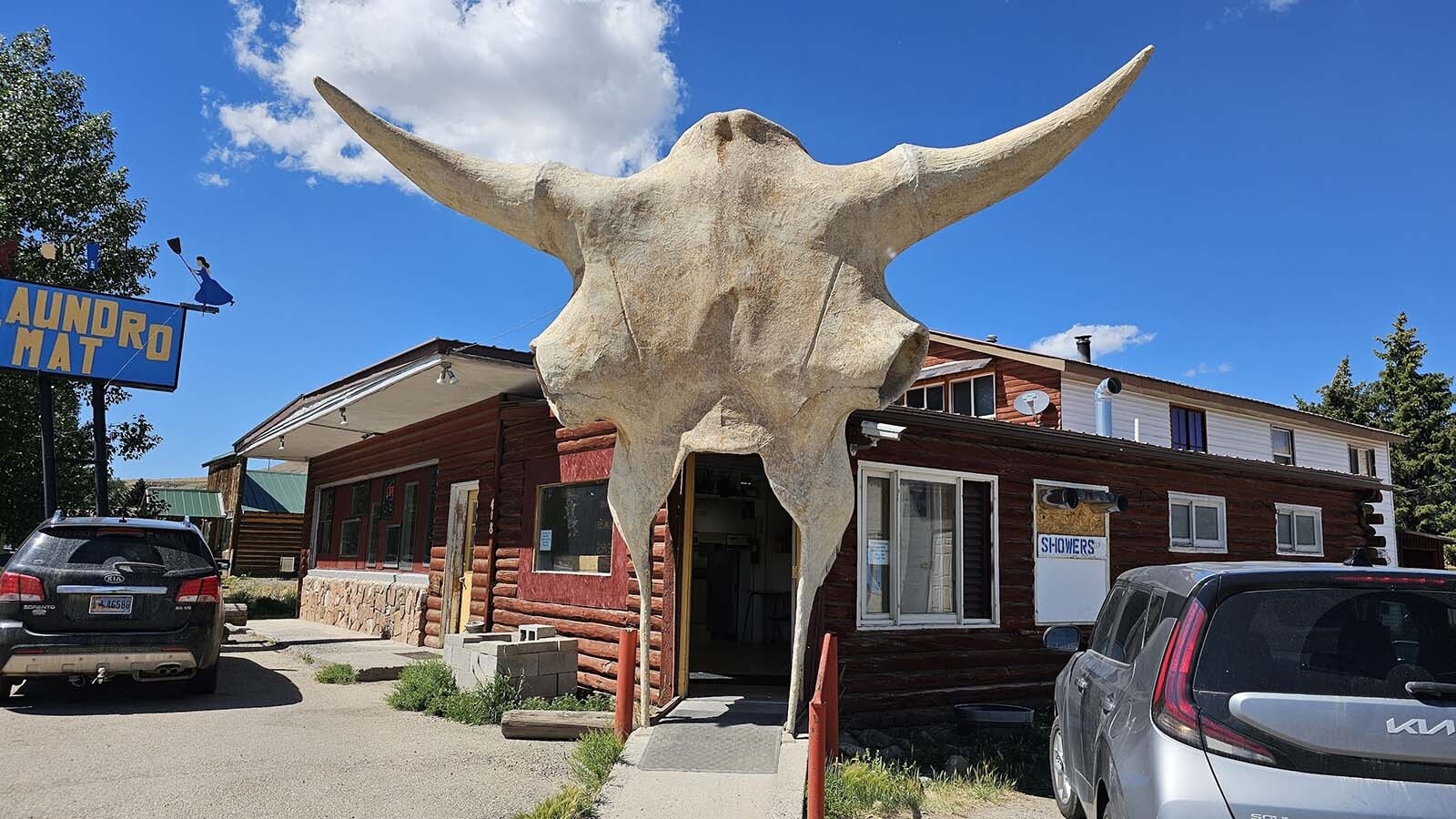The sound of lamb sizzling on the grill sounds just like beef to the ears. And the taste to many consumers turns out to be just as delicious when lamb is properly prepared.
Lamb has had a bump up in popularity thanks to the COVID-19 pandemic. Consumers who couldn’t get their usuals in many cases, had to branch out and try new things. Lamb is just one of the things to benefit from that.
“One of the things that’s become very popular for American lamb is actually using a lot of shoulders for barbecue style,” Wyoming University meat scientist and flavor expert Dr. Cody Gifford said during a recent lamb cooking demonstration in Kemmerer. “Because of the higher fat content, and the amount of water that’s contained within some of the muscles that are in that shoulder, it makes a really good product to actually slow cook.”
At the end of cooking, Gifford suggests wrapping the shoulder in some foil for a couple of hours before then pulling it apart — just like pulled pork.
Denver-style ribs are another cut that’s become quite popular since the pandemic, and which does very well for home chefs. They’re very similar to a pork spare rib, when it comes to both cooking and eating.
“We’re seeing demand increase for these,” Gifford said.
The flavor is a bit different, Gifford acknowledged. But, it’s not that mutton flavor that people so grew to dislike during World War II.
It’s better, much better, than that, and, with inflation driving up the cost of beef in particular, that has more people giving lamb a second look.
Why Lamb Dynamics Are Changing
Consumption of lamb used to closely pace the general meat market, but, during the pandemic, things began to change.
As more people were forced to become adventurous cooks, lamb sales started pulling away as people discovered that lamb is not only easy to prepare, but delicious. Sales doubled and tripled in volume.
The bump continued into 2021, when lamb saw a 5.2 percent increase in dollar sales, while meat overall declined 22.5 percent amid rising inflation.
Though sales have recently leveled off, they’re still hovering above pre-pandemic levels, Gifford told Cowboy State Daily. That’s fueling some hope among Wyoming lamb producers that their favorite meat is finally being discovered by the American public. They’re glad Americans are discovering what they’ve known all along. Lamb is a really delicious and highly nutritious product for the everyday table.
“We know that there were definitely repeat customers going back and purchasing lamb,” Gifford said.
The latest figures show lamb sales to be between 1.3 and 1.4 pounds per person per year, versus 1 pound per person pre-pandemic, Gifford told Cowboy State Daily.
“That doesn’t include our direct marketing outlets, or any custom or customized livestock purchasing,” Gifford said. “So, consumption could very likely be higher than that.”
Direct Sales Are Up
Ivan Laird, a Lander sheepherder with 50 ewes and about 81 lambs, thinks that direct sales are probably up in general.
Broken supply chains led customers to him, and now he’s selling roughly twice as many lambs direct to consumers, versus pre-pandemic.
“I think the trends are coming up,” he told Cowboy State Daily. “And I hope it continues.”
Laird isn’t looking, however, to increase the size of his herd. He’s just hoping popularity will help even out prices and keep his operation economically feasible.
“I lamb in March, and I don’t have room for any more in the sheds, so that’s going to be my throttle,” he said. “I need to be able to take care of that lambing season, and, in the event, we get weather like we had again this year, my sheds need to be big enough that I can keep everything in because we do lamb in March and we shear the first part of February.”
Classic Spices Work Best
Another big factor in lamb’s growing popularity is long-time efforts to educate consumers in preparing lamb so that it’s just as delicious as any other meat.
As a flavor expert, that’s something Gifford is actively working on, with both seminars and research into flavor development and tolerability.
Gifford likes to try a little experiment in his classes, where he’ll give students free range with 100-plus spices available in the class kitchen to cook lamb. The class will then do a taste test to see which one the students like the best.
He prepares his own favorite blend, which sounds rather basic. It’s salt, pepper, onion and garlic. Lots of garlic.
When it’s time to do the taste test, the dish he prepared with simpler spices is often the one his students will say they preferred.
The thing is, with lamb, there are some grassy notes that are not really enhanced by adding spices that add yet more grassy notes. Things like rosemary, parsley, sage, thyme, for example.
For similar reasons, sweet marinades don’t always pair as well with lamb as expected.
“We always tell people, you know, try a small amount first, and then start building up if you want a stronger intensity from there,” he said. “Sometimes, those more basic flavors that you get from ground pepper, garlic powder, onion powder — these types of good, basic, seasonings (are good) to start with, and then you can adapt from there.”
The Right Cut
Understanding the cuts of meat and when to use slow-cooking to break down connective tissue versus fast, hot grilling is also one of the keys to a tender, delicious lamb experience.
Shanks, for example, which have a lot of connective tissue, require a slow cooking process to be palatable. They also benefit from some acidity. A recipe like Osso Bucco, which marries wine and tomato sauce with slow-cooked meat, is thus a great choice for that cut.
For grilling, loins and sirloin chops are a good choice, Gifford told Cowboy State Daily. Like beef, these cuts are probably best if served on the rare side, rather than well done.
“Demand for barbecue has picked up a little bit, so Denver-style ribs have become pretty popular,” he said. “They cook almost identical to a pork spare rib.”
One thing to know about lamb, though, is that it doesn’t reheat the same as beef and pork.
“There’s some different lipids in there that are specifically driving that,” Gifford said.
Those fatty acids are a little more vulnerable to overheating, which creates off flavors. Gifford recommends adding additional moisture to lamb before reheating it and going slow — a nice braise, rather than nuking in a microwave.
“I think microwaving is where some of those, you know, off flavors can be exacerbated a little bit, just because of the intense rapid reheating,” he said.
Although there are some minor differences, nutritional profiles of lamb are very similar to other meats, Gifford added.
“(There’s) a lot of B vitamins and other macronutrients that lamb has to offer,” he said. “From a nutritional standpoint, it’s very competitive.”
Renée Jean can be reached at renee@cowboystatedaily.com.














